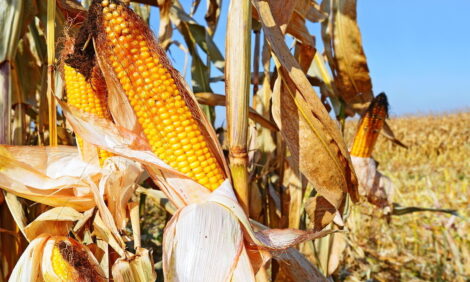



Replacement Heifer Development: Feeding Replacement Heifers
Kalyn Waters, Cow/Calf Field Specialist at South Dakota State University (SDSU) Extension, offers tips on feeding strategies for replacement heifers so that they attain puberty.
The greatest limiting factor to the success of a replacement heifer development program is the attainment of puberty. Luckily for producers a majority of the factors that affect the attainment of puberty (see also Replacement Heifer Development: The Attainment of Puberty) can be managed through nutrition (Figure 1) and the remaining factors can be controlled through selection (see also Selecting Effective Replacement Heifers). When developing a feeding strategy for feeding replacement heifers, there are several factors that should be taken in to account to ensure that puberty is reached prior to the breeding season, allowing heifers the opportunity to maximize their reproductive potential.

Once a producer has determined the needed average daily gain for heifers to reach approximately 60 to 65% of their mature body weight prior to the breeding season a diet should be developed to help reach those goals. While not overlooking the importance of a vitamin and mineral program, energy (TDN) and protein will be the two main nutrients that will be balanced for in a ration.
If there are sizable differences in the size and weight of heifers, they should be sorted into feeding groups so that feeding programs can be specifically targeted to that group of heifers. It is optimal for heifers to be weighed throughout the development phase to determine how the heifers are progressing towards their target weight. The diet composition and the amount fed can then be adjusted based on the heifer’s performance during that period and on how closely her performance matches projections. Making adjustments during the development period helps avoid having heifers that are drastically over- or under-fed at breeding time.
Throughout the development phase heifers should remain on a good plane of nutrition. However, heifers should not be over fed to become fat or fleshy (body condition score greater than 6) during the development phases. Fat will accumulate in the mammary glands of the heifer and alter their development, resulting in an irreversible decrease in glands ability to produce milk.
While it is well established how much heifers need to gain during the development phase, research has shown that the time and rate of gain can be altered. Typically people feed heifers to gain at a consistent rate throughout the development phase; however research by Lynch in 1997 showed that heifers gaining 2.5 lbs. the last 60 days compared to those gaining 1.5 lbs. throughout the entire period had no difference in reproductive performance while reducing feeding costs. If altering the time and rate of gain is something producers are considering, heifers should be weight at least 60 days prior to the breeding season to ensure benchmarks are being met and puberty will be attained.
While growth promoting implants should not be used in replacement heifers, at any phase of their life, ionophores have proven to be a useful tool in many heifer diets. Feeding an ionophore alters the microbial population of the rumen and will improve feed efficiency. If properly used it can increase gains of your replacement heifers and has been shown to help decrease the age at which puberty is reached by 14 to 28 days.
Developing a successful feeding program for a herd of replacement heifers is critical for their future reproductive success. While it seems like a complex feat to tackle, by planning ahead and understanding the benchmarks that must be met, and how to manage the attainment of puberty, producers can help secure their success.
November 2012


